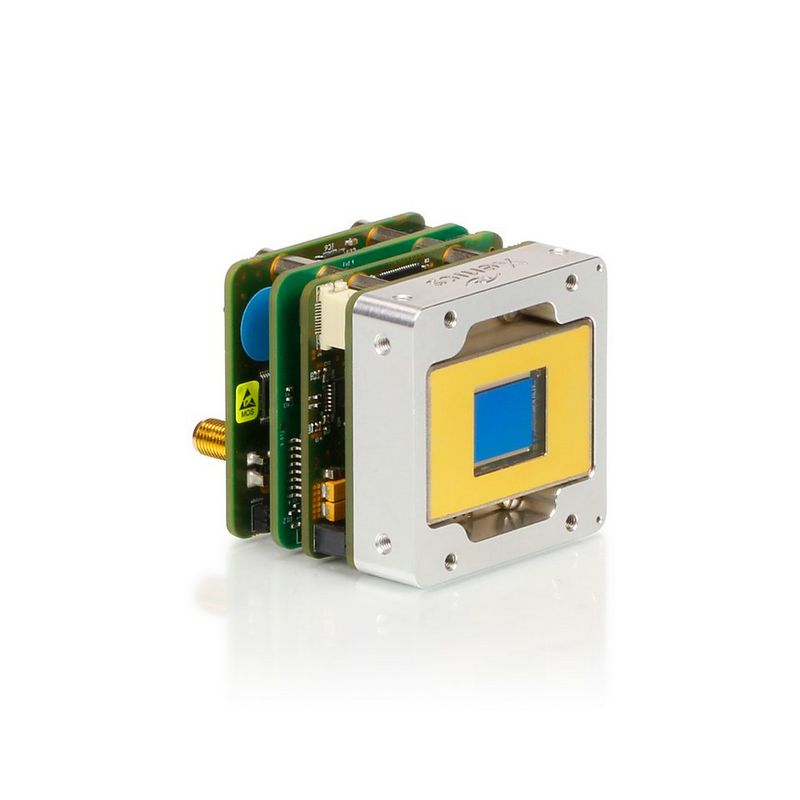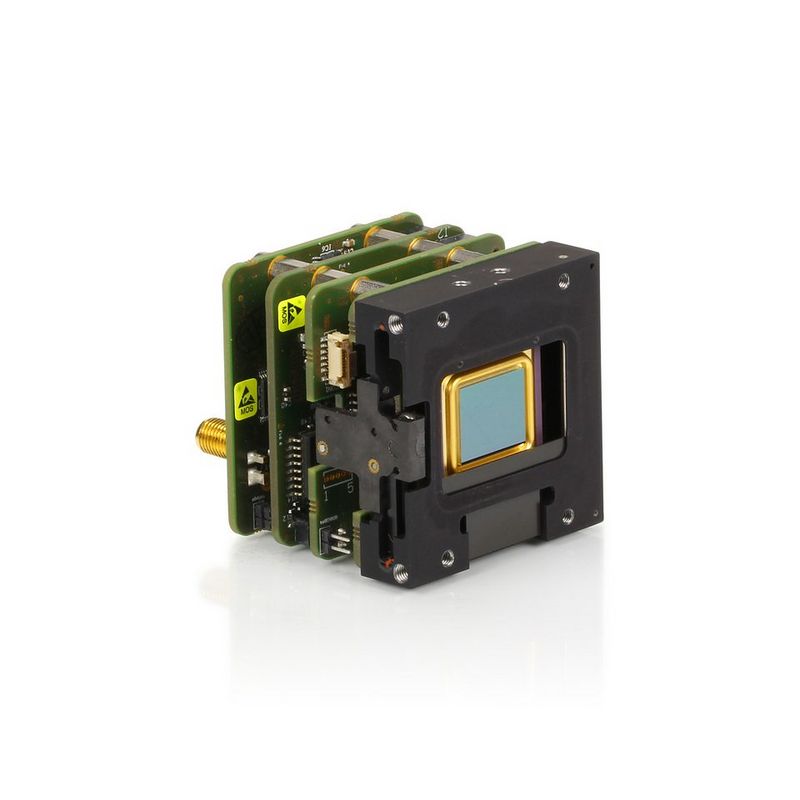Camera modules for the short and long wave infrared
IR and NIR camera modules are used in applications where there is no immediate use for a camera housing. Most often, to save space.
Xenics camera modules allow proprietary sensor configurations, data output and optics. A camera module always consists of a detector and all corresponding electronics. The user determines the interface which is also made by Xenics and which can be configured for ...
more
IR and NIR camera modules are used in applications where there is no immediate use for a camera housing. Most often, to save space.
Xenics camera modules allow proprietary sensor configurations, data output and optics. A camera module always consists of a detector and all corresponding electronics. The user determines the interface which is also made by Xenics and which can be configured for various data output variants. The user’s optics can be integrated. If purchased with the camera, the lens is already mounted. All in all, the camera module is an easy way to build one’s own camera without having to go through fundamental engineering routines.
Depending on the wavelength, Xenics use InGaAs sensors with numbers of pixels, microbolometers or InSb detectors.
These modules are then combined with either of the following interfaces: CameraLink [16 bit], GigE Vision [16 bit], Pal or NTSC-Video, Digital Video [16 bit] or BT.656.
We provide comprehensive documentation to facilitate an easy setup.
fewer
Xenics cameras for the NIR use proprietary InGaAs detectors so they perfectly match the proprietary Xenics electronics. Sensitivity and quantum efficiency of the InGaAs camera modules are the same as ...
In the LWIR, Xenics offer camera modules with uncooled state-of-the-art microbolometer detectors. The low weight microbolometer detectors come with 1280 x 1024 or 640 x 480 pixels and in different ...



